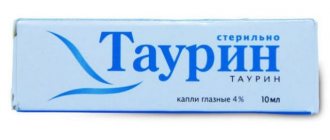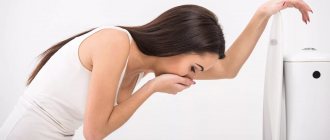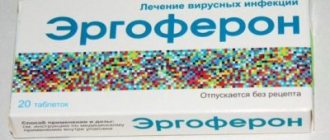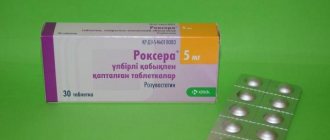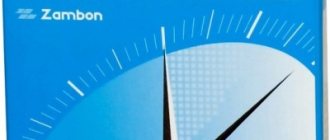Rinza, instructions for use, calls this drug a combination medication, by taking which you can quickly relieve unpleasant cold symptoms. Catarrhal symptoms of influenza and other viral infections are a signal for a person that he needs to put things aside and stay at home in order to gain strength and carry out adequate drug therapy.
However, symptoms in the form of elevated body temperature, coughing, sneezing, headaches and joint pain are not so easy to tolerate, so there is always a need to use medications that relieve these manifestations. The patient can take several medications at once for symptomatic therapy, or use one medicine that relieves a whole set of cold symptoms, which is Rinza.
Composition and release forms of the drug
Rinza tablets, powder, all these are varieties of the same active complex of substances. For ease of use, pharmacists have created two dosage forms of this popular medicine: the first is a powder in the form of granules, soluble in water, the second is pink tablets, taken orally. The tablets are packaged in individual blister packs (10 pieces each), packed in a cardboard box.
Various analogues and tablet forms make it convenient to use this drug for colds.
Rinzy contains the following components:
- caffeine (30 mg);
- paracetamol (500 mg);
- Chlorphenamine maleate (simultaneously 2 mg);
- Phenylephrine hydrochloride (10 mg).
In addition to the main ones, the medicine has auxiliary components:
- magnesium stearate;
- dyes;
- corn-based starch;
- silicon dioxide and others.
If you have Rinz tablets at home and use them, the viral infection goes away much faster, allowing a person to quickly get rid of all the unpleasant manifestations of a cold.
Mechanism of action
The pharmacological action and pharmacodynamics of Rinza are clearly indicated in the instructions that come with each drug. Before using the drug, it is very important to carefully read it in order to understand the effect of the drug and clarify the presence of contraindications that prevent the use of this medication for its intended purpose.
Rinza is a combination drug, which means that it contains a number of active substances, each of which has a special effect on the body.
The mechanism of action of the drug is based on the following:
- Paracetamol belongs to the category of non-steroidal anti-inflammatory substances, which allows it to quickly cope with elevated body temperatures, bringing them to the physiological norm (this is achieved by influencing the thermoregulation center located in the brain). In addition, this component reduces the severity of inflammatory processes and also relieves pain accumulated in the head, joints, and muscles.
- Phenylephrine is a substance from a series of alpha-adrenergic agonists that has an effect in the direction of vasoconstriction, which reduces the severity of swelling of the nasal mucosa, facilitates breathing, and reduces the amount of mucus discharge.
- Chlorphenamine has the ability to block histamine receptors, which reduces the severity of allergic reactions such as itching, redness of the eyes, skin, excessive lacrimation, and sneezing.
- Caffeine is a substance that stimulates the activity of the central nervous system, due to which intoxication manifestations such as fatigue, weakness, drowsiness, and decreased performance (mental, physical) are significantly reduced. It should be noted that this component reduces the hypotensive effect of Guanethidine, which must be taken into account during their combined use.
The instructions for the drug do not contain information about the processes of distribution of active substances throughout the tissues of the body, metabolic processes, and the removal of components outside the human body. It can be noted that paracetamol undergoes absorption processes in the middle sections of the intestine, in addition, it quite quickly combines with blood proteins. Its maximum concentration in the blood is reached within an hour after ingestion. It is worth remembering that this substance easily overcomes the placental and blood-brain barriers, so taking Rinza during pregnancy is prohibited.
Side effects
In the vast majority of cases, the drug is quite well tolerated by patients. Side effects are rare and this is usually associated with long-term use of the drug in doses exceeding those indicated in the instructions.
The following side effects are possible:
- organ of vision: accommodation, pupil dilation, increased intraocular pressure
- allergic reactions: urticaria, itching, skin rash, angioedema;
- hematopoietic system: pancytopenia, anemia, agranulocytosis, thrombocytopenia, aplastic/hemolytic anemia, methemoglobinemia;
- cardiovascular system: tachycardia, increased blood pressure;
- respiratory system: bronchial obstruction;
- central nervous system: dizziness, difficulty falling asleep, increased excitability;
- urinary system: glucosuria, inertial nephritis, renal colic, papillary necrosis;
- digestive system: dry mouth, nausea, vomiting, pain in the epigastric region, hepatotoxic effect.
Indications and contraindications
Rinza is a medical drug that must be taken according to strict indications. The instructions include:
- symptomatic treatment of viral infections (influenza, parainfluenza, rhinovirus, adenovirus and others);
- reducing the severity of unpleasant cold symptoms (stuffy and runny nose, headaches, joint pain, weakness, elevated body temperature).
Not all categories of patients can use this medication; there are a number of characteristics and conditions of the human body when the use of this medicine is strictly prohibited.
Contraindications for using Rinza:
- high blood pressure with severe course;
- diabetes mellitus (during decompensation);
- allergic rhinitis year-round;
- atherosclerosis of the coronary arteries, accompanied by the deposition of cholesterol plaques that reduce vascular lumen;
- taking medications for medical purposes containing the same components that are included in Rinza, as well as the simultaneous use of antidepressants, MAO inhibitors, beta-blockers;
- children under 15 years of age;
- pregnancy period (any trimester);
- breastfeeding time;
- high human sensitivity to any component of the drug.
In addition, there are a number of conditions when Rinza is allowed to be used, but with caution, under strict medical supervision:
- controlled arterial hypertension;
- increased thyroid function (thyrotoxicosis, hyperthyroidism);
- compensated course of diabetes mellitus;
- bronchial asthma;
- deficiency of certain enzymes;
- increased bilirubin levels;
- obstructive pulmonary pathology in a chronic course;
- liver and kidney failure;
- angle-closure glaucoma;
- prostate enlargement.
Contraindications for use of Rinza
The use of the drug “Rinza” is prohibited in the following cases:
- Diabetes;
- High blood pressure;
- Alcohol addiction;
- Bronchial asthma;
- Kidney failure;
- Insomnia;
- Hyperfunction of the thyroid gland;
- Blood diseases;
- For atherosclerosis;
- Pregnancy;
- Prostatitis;
- Glaucoma;
- Epilepsy;
- Dubin-Johnson syndrome;
In addition, it is not advisable to take medication with antidepressants.
You should not take more than the prescribed norm at one time, wanting to quickly improve your health. This action will only worsen your condition and other problems will appear. For example, your vision may deteriorate, your excitability may increase, or you may even experience pain in the epigastric zone along with nausea. Therefore, always follow the norm.
Instructions for use
The method of use and dose of Rinza are clearly defined by the instructions included with the medication. In addition, the doctor who examined the patient can advise you to prescribe Rinza and how many times a day to drink it.
How to use Rinza tablets?
- Should you drink Rinza before or after meals? Despite the fact that some medications are taken before meals, it is better to take this medicine after meals, so the harmful effects of pharmaceutical components on the mucous membrane of the gastrointestinal tract will be lower.
- The tablets do not need to be chewed; they are swallowed whole with a sufficient amount of liquid.
- For adults, as well as children over fifteen years of age, a single dose is 1 tablet.
- The daily dosage frequency is 4 (you should not take more than 4 tablets per day).
- The course of therapy is 5 days.
Before using the medication, it is very important to read the instructions, which contain special instructions that must be followed during such drug therapy.
Special instructions:
- refusal from alcohol, sleeping pills, and anti-anxiety medications for the duration of treatment;
- prohibition on driving vehicles or working with complex mechanisms, due to the high probability of a decrease in reaction speed.
It is not allowed to exceed the therapeutic dose of the drug recommended by the doctor or the instructions. If a person drinks a large amount of Rinza, too much paracetamol will enter his body, which can cause unpleasant consequences.
Adverse reactions:
- pale skin;
- nausea;
- appetite disorders;
- increased liver blood counts;
- disorders of the blood clotting process.
If symptoms of overdose occur, it is important to promptly organize first aid, including:
- gastric lavage;
- taking intestinal sorbents;
- seeking medical help.
Particularly severe cases of overdose may require the administration of special antidotes, methionine, if 9 hours have not passed, carbocisteine (more than 12 hours after use).
Composition of the drug
- Paracetamol relieves pain and reduces fever.
- Phenylephrine is an alpha adrenergic agonist that has a vasoconstrictor effect and reduces high fever. The component also helps get rid of irritation and swelling of the nasal mucosa and upper respiratory tract.
- Chlophenamine is a histamine receptor blocker. The component has an antihistamine effect and stops the inflammatory process in the respiratory organs.
- Caffeine is a stimulant for the central nervous system. This is how a person gets rid of drowsiness and fatigue during illness.
Rinza is produced in tablets, analogues are Neovir, Kaffetin, Rinikold, Cycloferon.
Compatibility with other drugs
Serious harm to a person who has chosen Rinza for treatment can be caused by an overdose or interaction of this medicine with other drugs (provided that taking medications together is prohibited).
The instructions contain information about drug interactions between Rinza and other drugs:
- with halothane, increases the risk of developing ventricular arrhythmia;
- with monoamine oxidase inhibitors, sedatives, ethanol, leading to an increase in their effect on the body;
- with antidepressants, antiparksonian drugs, antipsychotic drugs, phenothiazine derivatives, increase the likelihood of developing adverse reactions (dry mouth, urinary retention, disruption of the digestive system;
- with tricyclic antidepressants: leads to increased adrenomimetic effects of phenylephrine;
- with glucocorticosteroids: increases the risk of developing glaucoma;
- with monoamine oxidase inhibitors, furazolidone leads to increased agitation and the development of a hypertensive crisis;
- with diuretics – leads to a decrease in their effectiveness;
- with ethanol – increases the effect of antihistamines;
- with barbiturates, rifampicin, carbamazepine: increases the toxic effects of paracetamol.
Drug overdose
Paracetamol can have a toxic effect on the human body after taking a dose of 10-15 g. In this case, the following symptoms occur:
- decreased prothrombin value, increased bilirubin level;
- lack of appetite, pale skin, nausea, stomach discomfort, diarrhea;
- weakness, pain in the right hypochondrium, sweating, hepatomegaly, jaundice, increased activity of liver enzymes;
- hepatonecrosis, hypoglycemia, metabolic acidosis, rhythm disturbance, coma, convulsive state, cerebral edema, collapse.
In case of an overdose of phenylephrine, the following are observed: nervousness, confusion, dizziness, tremors of the limbs, arrhythmia, anxiety.
Signs of an overdose of chlorphenmine: intestinal atony, arterial hypotension, dilated pupils, dry mouth, photophobia, hyperthermia, bradycardia.
Symptoms of caffeine overdose: headache, tremor, excitability, extrasystoles.
To eliminate such conditions, gastric lavage, sorbents and symptomatic therapy are required.
Side effects
Incorrect dosage regimen and prolonged use of Rinza can lead to the development of side effects and allergic reactions.
Any organ and system of the human body can give an undesirable reaction to taking this medication:
- Gastrointestinal organs: dry mouth, nausea, epigastric pain, toxic effect on the liver;
- CNS: sleep problems, increased excitability, dizziness;
- heart and blood vessels: development of tachycardia, increase in blood pressure;
- circulatory system: decrease in platelets, granulocytes, development of anemia;
- organs of vision: increased pressure inside the eyes, dilated pupils, accommodation paresis;
- organs of the urinary system: renal colic, interstitial nephritis;
- organs of the respiratory system: spasm of smooth muscles, bronchospasm;
- allergic manifestations: irritation, redness, skin rashes accompanied by itching, increased lacrimation, swelling of the soft tissues of the face, genitals;
- general: headache, muscle, joint.
The occurrence of any such reactions is a clear indication to discontinue Rinza therapy and seek medical help.
It is worth noting a number of analogues, if necessary, replacing this drug:
- Flustop;
- Gripoflex;
- Rinicold;
- Nolflu;
- Coldrin.
The use of any drug should occur only after receiving preliminary medical advice; only a specialist will prescribe an effective drug, correctly selecting a safe dosage regimen.
Rinza dosage
For children over 15 years of age and adults, it is necessary to take no more than one tablet 4 times a day per day. A course of therapy of up to 4 days is no longer recommended, the drug can cause serious harm.
In case of overdose:
- Erythema, toxic necrolysis may appear on the skin, sweating increases, itching, rash, and urticaria appear.
- Problems with the immune system arise - angioedema, anaphylactic shock.
- Neurological diseases appear - severe headaches, constant overexcitation, increased nervousness, a feeling of fear arises, and irritability increases. Sometimes there is tinnitus and epilepsy.
- Stomach diseases develop - the mouth becomes dry, nausea and vomiting are observed. Flatulence, heartburn, and constipation appear.
- Serious problems arise with the blood and lymphatic system - anemia, methemoglobinemia.


